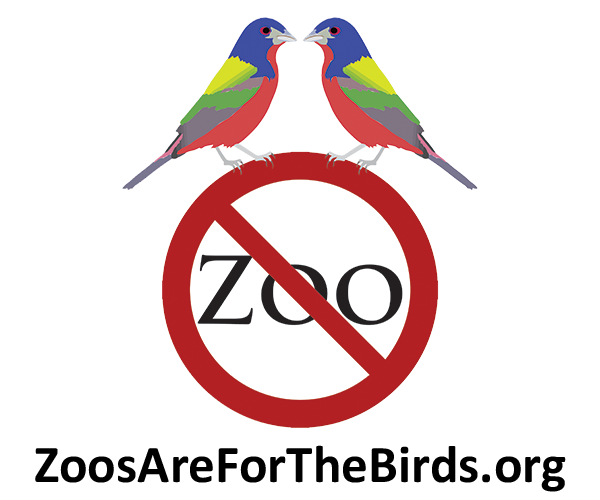FAQ
In addition to reading through these FAQ, we highly recommend reading, Are Zoos Misleading Us? Ten Points to Ponder, a 24-page fully illustrated magazine supported by 38 references. This is essential reading for those who love animals.
Q: Zoos exist to care for animals, don’t they?
A: Zoos are a $16 billion industry in the United States alone. It seems commerce, rather than animal welfare, drives this industry.
Q: Zoos take good care of animals, don’t they?
A: Many zoos kill “surplus” animals —even the babies —without the slightest regard to mercy.
Q: Aren’t zoos are great source of education?
A: A study found that the most common expressions used to describe animals by zoo-goers are ‘cute’, ‘funny-looking’, ‘lazy’, ‘dirty’, ‘weird’ and ‘strange’. Those who visited the elephant exhibit only stayed an average of 77 seconds.
Q: Animals are safe at zoos, aren’t they?
A: Perhaps, the most dangerous place for an elephant is a zoo. PETA states that, “The lives of elephants in zoos typically are far shorter than their 70-year life expectancy. More than half of the 76 elephants who have died at AZA accredited facilities since 2000 never even reached the age of 40.”
Q: Aren’t zoos dedicated to wildlife conservation?
A: Zoo director David Hancocks said, “There is a commonly held misconception that zoos are not only saving wild animals from extinction but also reintroducing them to their wild habitats. The confusion stems from many sources, all of them zoo-based. In reality, most zoos have had no contact of any kind with any reintroduction program.”
Q: Don’t zoos treat all animals as important individuals?
A: Zoos operate as though animals are a commodity, thus conveying this misconception to the general public, the majority of whom accept the message unconsciously.
Q: Elephants are safe in zoos located in cold regions, aren’t they?
A: Elephants are at risk of hypothermia at 40?F or 4?C. Should they spend more than an hour in such conditions, they must be monitored by a qualified attendant for several hours.
Q: Zoos give animals all the exercise they need.
A: Let’s consider the cheetah. Because a cheetah’s nasal passages, heart and lungs are significantly larger in ratio to its body, compared to other animals, it is able to rapidly enrich its blood with oxygen, allowing acceleration from a standing start to 47 mph in an astonishing two seconds.
While hunting, a cheetah averages 40 mph during pursuit, interspersed with explosions of speed between 65 and 75 mph. One leaping stride of a running cheetah on the hunt at full speed averages 22 ft.
All four legs are off the ground half the time during a dead run, in which the cheetah literally sails through space, contributing to this fantastic stride length.
Every part of its body— its feet, claws, shoulders, greyhound-like torso, even its tail, used as a rudder of sorts—is morphologically attuned to exquisite velocity. Its ability to keep its head almost stationary, riveting its eyes like lasers, while streaking t’ward its prey in a blur is otherworldly.
Would any fairminded person restrict this fleetest of mammals to captivity for life?
Likewise, polar bears are inhumanely restricted in zoos. One of the best exhibits for them in the United States comprises four acres including a 190,000 gallon saltwater pool. To humans, this may seem ample for three polar bears. Yet, in their natural habitat, “Young polar bears may travel more than 600 miles (1,000 kilometers) to set up a home range apart from their mother.
Q: Zoos are tightly regulated and accountable for their actions, so they must take good care of animals.
A: “In the United States, the U.S. Department of Agriculture (USDA) licenses animal exhibit-ors and is supposed to enforce the federal Animal Welfare Act (AWA). But permits are issued to nearly any-one who fills out an appli-cation and sends in a fee.
“Generally, the AWA addresses basic husband-ry issues. Animals must be fed, watered, and provided with shelter, yet cages can have cement floors and there’s no require-ment for grass, greenery, or other natural vegetation. Cage space regulations generally are interpreted to require only that the animals be provided with enough room to stand up, lie down, turn around, and move around a bit.
“While local authorities do have the legal power to enforce state cruelty laws for animals suffering in zoos, the vast majority simply refuse to take action, passing the buck to the USDA.”
“At a so-called ‘Animal Park’ in the affluent suburbs of Washington, D.C., an unwanted wallaby was drowned to death when the owner no longer wanted it. These types of unaccredited zoos are a large problem in the U.S. and they are easy to set up. A person can obtain an exhibitor license under the Animal Welfare Act, privately possess wild animals and establish a zoo.”
And, the AZA approves procedures such as the “free contact” elephant management system. “In free contact, the keeper must dominate the elephant at all times and uses negative reinforcement to achieve this. Handlers use the steel-pointed bullhook, a device resembling a fireplace poker, to prod, hook and strike elephants and force compliance with commands. Even when not in use, the bullhook is a constant reminder of the physical punishment that can be delivered at any time, for any reason.”
Q: Animals can be justifiably taken from, or kept from, their natural environment for human amusement and imprisoned for life, because they don’t care where or how they live, right?
A: Animals are not here for our amusement. Of course, they may amuse us, yet this is merely a by-product of their lives and not their purpose. In the case of elephants, their purpose is to live freely, roaming over thousands of acres with their families in the wild. As we have seen, animals are not unfeeling commodities. And, kidnaping them destroys families, causing debilitating mental and physical ramifications, tragedies unworthy of a few fleeting seconds of human amusement.
